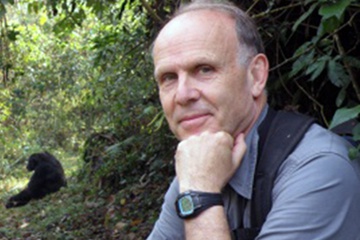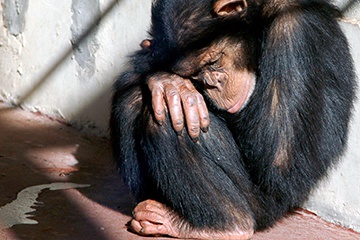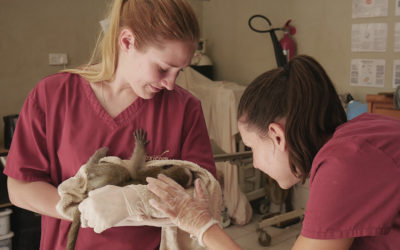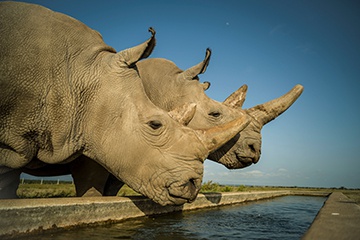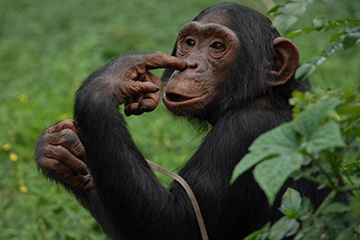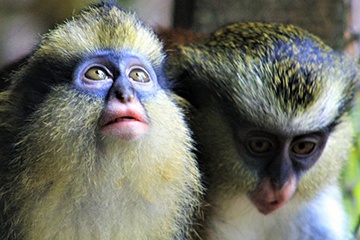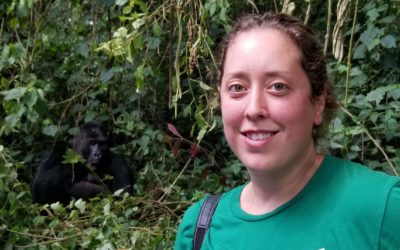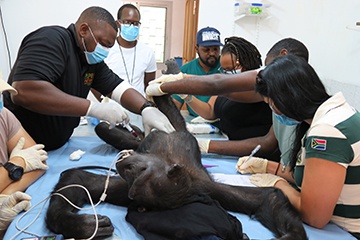How Can You Reduce Climate Change by Helping Protect Great Apes?
New Data Show that Climate Change Is Causing Massive Tree Die-Offs in Africa
By Natasha Tworoski
It’s hard to find a place on the planet where scientific evidence isn’t showing global climate change taking a drastic toll on wildlife and ecosystems. Tragically, this includes the lush forests of Africa and its diverse wildlife.
Africa’s Congo Basin is the second largest rainforest in the world, reaching across six countries, and is home to the greatest number of primates, mammals, birds, fish and swallowtail butterflies of any region of Africa. It also hosts Africa’s second longest river, the Congo River, an important source of water for wildlife and people. Like so many wild places, the Congo Basin is an indicator of the dramatic changes our planet is now undergoing.
NASA satellite imaging and the highly sensitive Enhanced Vegetation Index can reveal the amount of greenness, an indicator of forest health. While the loss of vegetation, referred to as “browning,” has been occurring in the Amazon at a rapid rate, imaging recorded in 2014 showed browning in the Congo Basin is now a major concern there as well. Increasing land surface temperatures and decreased cloudiness are causing large scale tree mortality, which in turn exposes more of the Earth’s surface to the effects of rising temperatures, increasing the rate of climate change.
With deforestation already a huge threat to wildlife in the Congo Basin, this evidence that the remaining forest is deteriorating due to climate change is disheartening news.
A new horrifying threat has just been published this week in the highly respected peer-reviewed journal Nature. Satellite imaging of the Congo Basin’s Cuvette Centrale peat lands, which exist across the Republic of Congo and the Democratic Republic of Congo, have been found to hold 30 billion tons of carbon. This amount is equivalent to 3 years of global emissions. While peat lands only cover 3% of the planet’s surface, they are responsible for one third of soil carbon. The frightening problem comes when peat lands are dug up, usually to create new farm land, and the carbon is released from the earth and into the atmosphere. While the Cuvette Centrale peat lands are not yet being destroyed, the rapidly growing trend of palm oil plantations in Africa mean this could be a very real risk in the near future.
Fortunately, the Cuvette Centrale peat lands are located in a region that is highly inaccessible, which is likely the reason they have not been disturbed to date. The peat lands also have a champion in their corner – this area is home to one of the highest densities of gorillas in Africa.
By protecting one of our closest relatives and their habitat, we are also protecting all of us from the devastating effects of climate change.
Please donate today to help protect African primates and their habitat – before it’s too late.
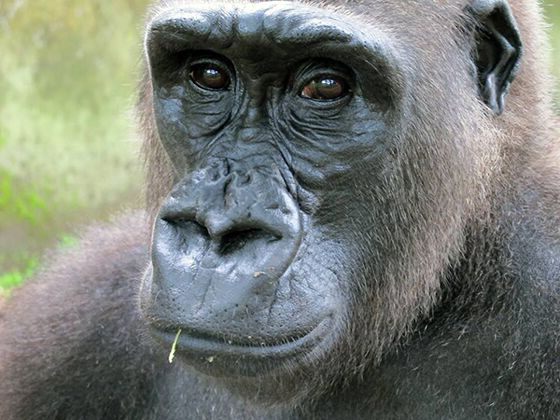
Protecting an area with the largest concentration of gorillas in Africa also prevents disruption of peat lands, a major risk for release of carbon into the atmosphere.
Next Posts
PASA Interviews Richard Wrangham
The Harvard primatologist and long-time PASA board member believes wildlife centers have a crucial role to play in the protection of endangered primates.
How the Illegal Pet Trade Endangers Primates
PASA’s new petition takes on social media giants on behalf of apes and monkeys. You can help!
Lilongwe Wildlife Centre: Malawi’s Only Wildlife Sanctuary
Rescues, rehabilitation, and the largest environmental education program in Malawi.
Saving the Last Remaining Northern White Rhinos
Dr. Stephen Ngulu of Sweetwaters Chimpanzee Sanctuary plays a crucial role in northern white rhino recovery.
Six Simple Ways Anyone Can Help Save Africa’s Primates
Here are some ideas you can incorporate into your life that make a difference toward saving Africa’s primates.
Caring for the Most Vulnerable
The Vervet Monkey Foundation has rescued a number of blind monkeys, some of whom lost their sight at the hands of humans. Sanctuary staff work hard to keep these special-needs primates safe and provide them with companionship.
Healing Orphans, Saving Lives: The Incredible Work of Ape Action Africa
Ape Action Africa is protecting Cameroon’s great apes through direct action, including rescuing orphaned gorillas, chimpanzees and monkeys, giving them a safe forest sanctuary home where they can live with their own kind.
Volunteer Spotlight: Meet Natasha
Long-term volunteer Natasha Tworoski shares her thoughts on PASA, the importance of sanctuaries, and how she got involved in the fight to protect primates.
On the Frontlines to Save Primates: PASA’s 2019 Veterinary Workshop
PASA veterinarians convene in Cameroon to discuss conservation, disease, and saving humanity’s closest relatives.
Life at Lwiro Primate Rehabilitation Center
Volunteer Natasha Tworoski shares her observations after visiting legendary PASA sanctuary, Lwiro Primate Rehabilitation Center.

